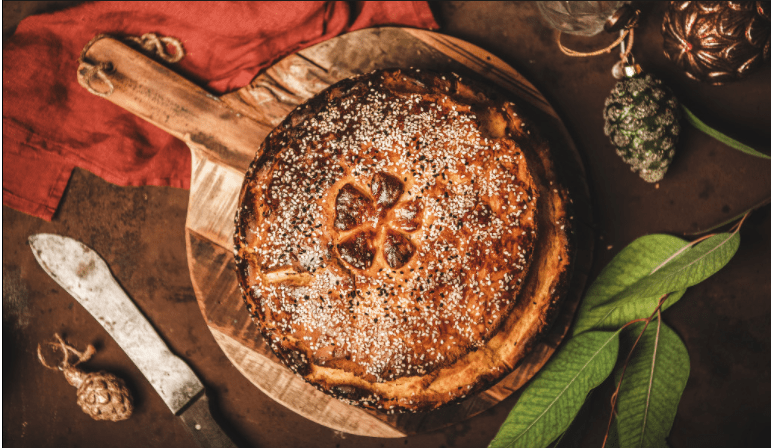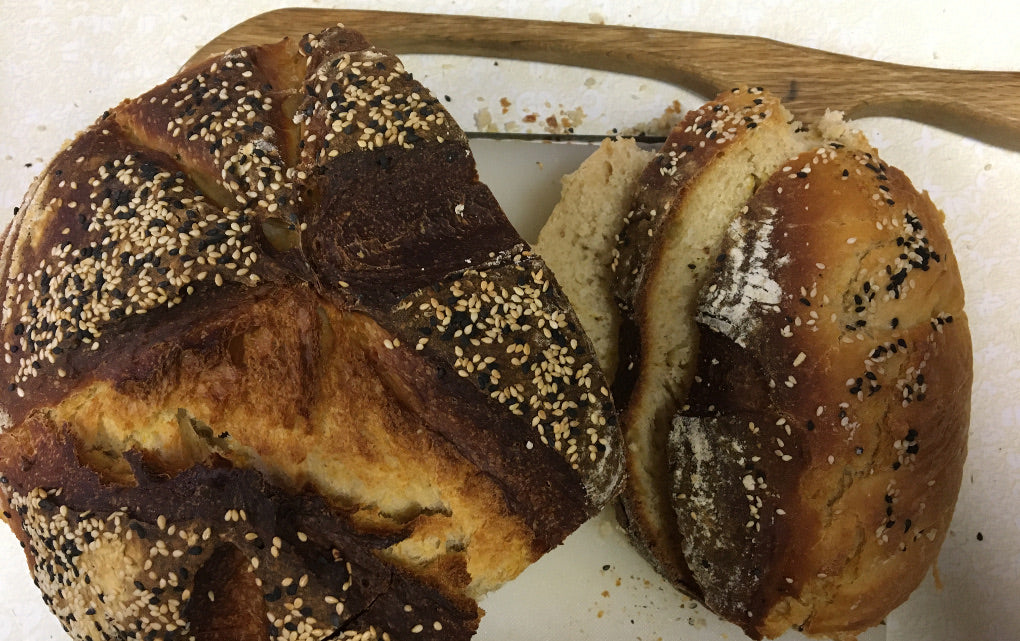Last year our daughter-in-law introduced our family to Vasilopita for our New Years celebration. She has Greek heritage, where this bread or cake plays a traditional role in New Year’s Day; we baked ours using Elizabeth Lindemann recipe adapted for sourdough.
Lindemann at Bowl of Delicious tells us that Vasilopita is traditionally sliced into at midnight on New Year’s Eve or Day “and served to each member of the family in order of age, starting with the eldest,” to bring blessings and good luck for the new year. Most families hide a coin or trinket in the dough before it is baked as a symbol of “good luck to the receiver.”
Since at our home, each Christmas, we all re gold dollars in our Christmas Socks, they are perfect for this bread. That is if I have been lucky to get a roll or two that have not been circulated. Otherwise, coins need to be cleaned well before baking them into the Vasilopita. And since most Vasilopita recipes I found were made with yeast, this one has been adapted, like I said for sourdough:

SOURDOUGH VASILOPITA RECIPE
PREFERMENT INGREDIENTS
- 1 ¼ cups (300 g) flour
- 1 cup (240 g) milk
- 150 g sourdough starter
PREFERMENT DIRECTIONS
- Mix all the ingredients together until fully combined
- Let stand, loosely covered in a warm (room temperature) location overnight or at least 6-8 hours
VASILOPITA DOUGH INGREDIENTS
- ⅜ cup (75 g) sugar
- 2½ cups (310 g) all-purpose flour
- 1 Tbls (15 g) butter (plus more for the bowl and pan)
- ½ tsp (3 g) salt
- 3 beaten eggs
- zest of one orange
- sesame seeds
VASILOPITA DOUGH DIRECTIONS
- Whisk sugar, salt, and the remaining 2½ cups of flour together.
- Add sourdough, olive oil, 2 beaten eggs (1 is for later), and orange zest.
- Mix until dough is smooth.
- Knead the dough for ten minutes, (add more flour if the dough is too sticky).
- Oil a bowl, turn the dough once to coat all surfaces.
- Cover and let rise 1-2 hours, or until doubled in size.
- Punch dough down, then knead and shape into a boulle (ball).
- Place in two oiled 9-inch round pans.
- Allow to rise until doubled in size for about one hour in a warm place.
- Using a lame or razor blade, cut decorative patterns into the top of the loaf.
- Using a pastry brush, brush the top with the remaining beaten egg and sprinkle with sesame seeds.
- Bake at 375° F (190°C) for 10 minutes, then turn temperature to 350° F (175°C); bake for another 30 minutes or until the top is browned.
- Cool 10 minutes before removing from the pan. Then cool completely on a cooling rack after removing it.
- At this point, you can insert a clean coin into the bottom of the loaf using a toothpick or skinny knife to push it in.
- Cut into wedges and serve.
If interested, you can read more about the tradition and history of Vasilopita here.

